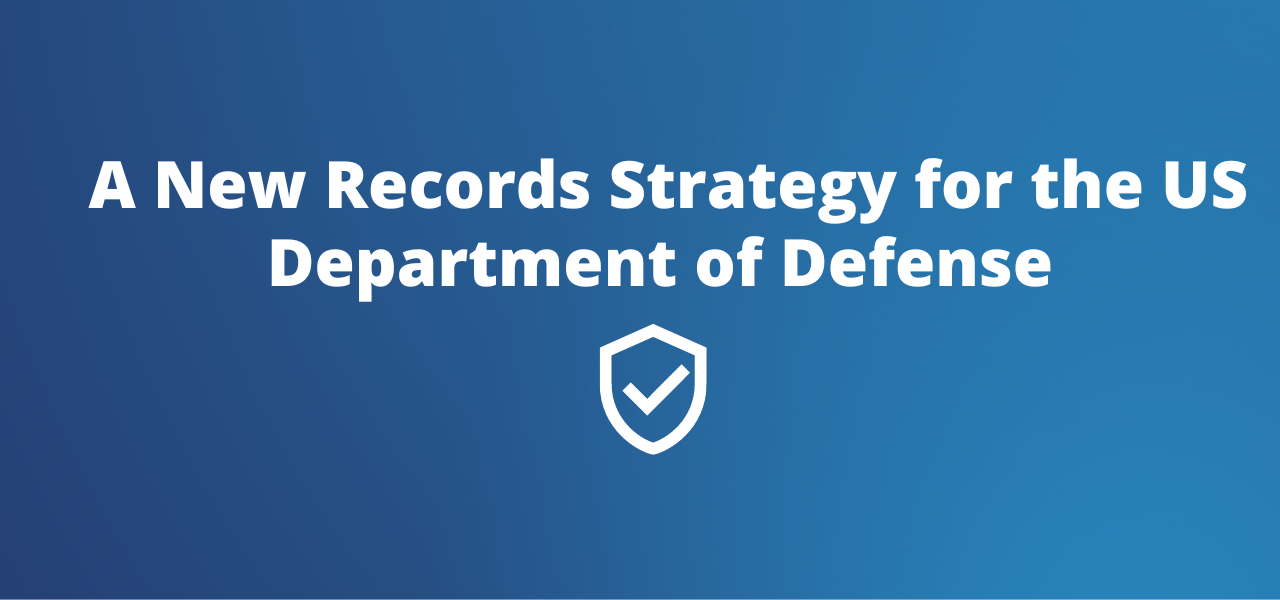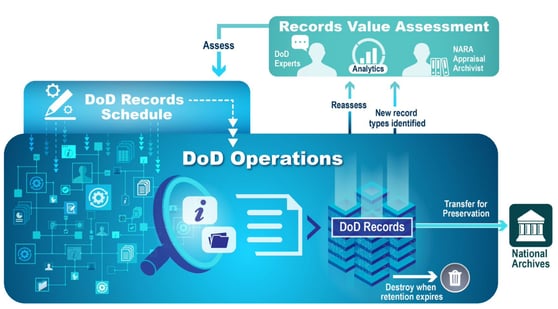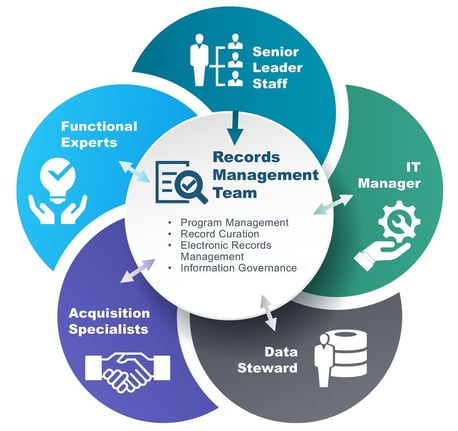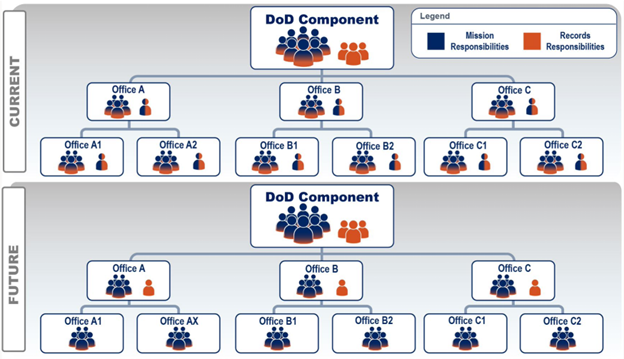
A New Records Strategy for the US Department of Defense
Information Governance | Intelligent Information Management (IIM)

Navy Petty Officer1st Class Rholanda Tucker, assigned to the "Blacklions" of Strike Fighter Squadron 213, conducts routine maintenance on a 20mm gun from an F/A-18F Super Hornet in the hangar bay of the aircraft carrier USS Gerald R. Ford in the Adriatic Sea, July 16, 2023. The Gerald R. Ford Carrier Strike Group is on a scheduled deployment in the U.S. Naval Forces Europe area of operations, employed by the U.S. Sixth Fleet to defend U.S., allied, and partner interests. Photo By: Navy Petty Officer 3rd Class Aaron Arroyo
I began working at the DoD Chief Information Officer’s office on March 27, 2023. On April 13, 2023, the US DoD CIO, the Honorable John Sherman officially appointed me to be the Department of Defense Records Officer. On May 22, 2023, the US Deputy Secretary of Defense signed out the department’s first-ever DoD Records Strategy. The past few months have been a bit of a whirlwind.
According to the Deputy Secretary, the Honorable Kathleen Hicks, in the strategy’s introduction:
Records are a key instrument for decision-making, and the linchpin of accountability, transparency, learning, growing, and passing along institutional knowledge to those who will lead DoD in the future. Past operations can inform and enhance present-day operational planning and decision-making through a well-kept and accessible records management system. That’s why good records management is important for mission success. Harnessing the long-term potential of information requires investment in records management capabilities and a workforce with the talent necessary to fully leverage those capabilities.
The DoD Records Strategy is a plan to modernize the way the DoD manages its records. To realize the vision of the strategy, the DoD needs to know what information it has, how to access that information, and how long to keep it.
The strategy has 3 goals:
- Curate: As shown in the figure below, the assessment process feeds the DoD records schedule, which serves as the blueprint for ongoing curation and codifies the required retention time for each type of record whether it is an operational record, personnel record, or correspondence. Based on the blueprint, information is identified as records, context is added, and the record is captured for mission use.

- Automate: By using technology to automate many of the tasks involved in records management, the DoD can free up staff time to focus on support to DoD's mission. This can lead to cost savings and improved productivity.
- Govern: Accountability for the record is assigned for its entire lifespan. Governance ensures that DoD records are available for decision-makers and that DoD leaders can make informed decisions and effectively respond to current and future challenges.
The strategy is designed to be implemented over a five-year period. It is not a stand-alone document. It is intended to be used in conjunction with other DoD policies and procedures, including DoD Instruction 5015.02, currently under review; DTM 22-001; and DoD 5015.02-STD (expected to be replaced this summer by new DoD Manual 8180.aa, which at the time of writing had cleared legal sufficiency review, been approved for public release, and was awaiting DoD CIO signature.)
The strategy establishes the DoD's direction for well-managed records. It provides decision-makers with the context to act based on trustworthy information, historical consistency, and analytical rigor. We call that “decision advantage.”
The information workforce within DoD will need to continue to evolve to match the evolution of the digital information it must manage. However, the strategy doesn’t lean into the idea that “every worker is a records officer,” it recognizes that the knowledge workers, the “productivity users,” the functional experts, the “action officers”—whatever you call them—have subject matter expertise that is their core competency. These people need to focus primarily on their work and automation needs to do the records management for them. Instead of spreading records management duties across the workforce, those duties should be shouldered by a small cadre of full-time professionals who have a combination of skills, likely across a diverse team who have specific, collaborative roles to play.
We think the records management function can be represented by this flower:

The evolution of the workforce is represented below—current and future states, with records responsibilities, and the diverse skill set required to manage information increasingly in the hands of full-time specialists:

The DoD Records Strategy, now a part of the DoD CIO’s overall library of strategy documents, acknowledges that records management isn’t merely a compliance activity, it is a mission-supporting outcome—critical to the accomplishment of DoD's overall mission: to provide the military forces needed to deter war and ensure our nation's security.
Is there a parallel strategy in your organization? Can you “connect the dots” from records to organizational performance? I would be happy to hear from you with comments on this strategy, suggestions, or anecdotes about the approach to this subject where you work (funny anecdotes are appreciated!).
Read the entire strategy for more details. Here are the Records Officers across the DoD who will breathe life into this strategy. I am proud to serve and advocate for this community of records and information professionals and their teammates who work for our country within the Department of Defense.
Note: All 3 graphics in this post come from the DoD Records Strategy which was cleared for public release May 22, 2023 by the Defense Office of Prepublication and Security Review (DOPSR 23-S-2095).
About Mark Patrick, CIP
Mark Patrick, CIP, is the Records Officer for the US Department of Defense. He is a retired US Navy helicopter pilot who has served in the federal civil service for over 16 years. He has worked in information and records management for over 18 years and served on the Joint Staff from 2007-2023 prior to assuming his current role. Mark served six years on the AIIM board of directors, as the 2018 board chairman, and in 2019 as Immediate Past Chair. He is an AIIM Certified Information Professional (CIP) and holds NARA’s Agency Records Officer Certificate (AROC), a requirement for all US government Agency Records Officers. He was inducted into AIIM’s Company of Fellows in 2020 in Dallas, as Fellow #225. He holds a BA from the University of Virginia and an MA from Tufts University.


